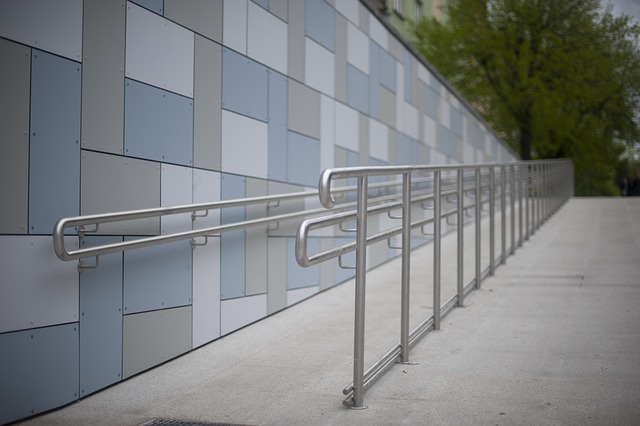Wheelchair ramps are lifelines, promoting independence and accessibility for those using wheelchairs or mobility devices. But like any tool, getting the most out of a ramp requires proper use and awareness. This guide dives into maximizing the functionality and safety of your wheelchair ramp.
General Safety:
- Check the Slope: The ramp’s incline is crucial. Standard ramps follow a 1:12 ratio (one inch rise for every 12 inches of length). Steeper inclines can be difficult and dangerous. If unsure about the slope, consult a professional for assessment.
- Surface Matters: The ramp surface should be slip-resistant, especially in wet or icy conditions. Look for grooved or textured surfaces for better traction.
- Clear the Path: Keep the ramp free from clutter, snow, or debris that could hinder movement.
- Mind the Handrails: If your ramp has handrails, use them for additional support and stability.
Ascending the Ramp:
- Positioning: When approaching the ramp, position the wheelchair at the bottom, facing directly upwards. Engage the wheel locks to prevent the chair from rolling backwards.
- Power Up (Electric Wheelchairs): For electric wheelchairs, use a low speed and move steadily upwards. If possible, maintain a straight line to avoid tipping.
- Manual Propulsion: For manual wheelchairs, use a pushing technique that is comfortable and effective. You can push the wheels from behind or use a handrim technique where you propel yourself by rotating the wheels.
- Assistance: If you require assistance, communicate clearly with your helper. Ideally, the helper should push from behind, maintaining a steady pace.
Descending the Ramp:
- Gravity’s Pull: Remember, gravity can accelerate your descent. Descend slowly and with caution, especially on steeper ramps.
- Braking Techniques: For manual wheelchairs, use the brakes to control your speed. Apply them gently to avoid jerking or loss of control. Electric wheelchairs may have speed controls or braking mechanisms – consult your chair’s manual for proper use.
- Maintain Control: Keep your center of gravity low and avoid leaning forward excessively. This will help prevent tipping.
Additional Tips:
- Practice Makes Perfect: If you’re new to using ramps, practice in a safe, controlled environment to build confidence and technique.
- Communication is Key: If you require assistance, clearly communicate your needs and preferences to your helper.
- Lighting Matters: Ensure proper lighting on the ramp, especially during nighttime use.
- Maintenance Matters: Regularly inspect your ramp for damage or loose components. Address any issues promptly to maintain safety.
Resources:
- The National Center for Universal Design [National Center for Universal Design] offers a wealth of information on accessibility guidelines and best practices, including ramp design.
- The Christopher & Dana Reeve Foundation [Christopher & Dana Reeve Foundation] provides resources and support for people living with spinal cord injuries, including information on wheelchair use and safety.
By following these guidelines and practicing safe techniques, you can transform your wheelchair ramp from a mere passageway to a tool for greater independence and mobility. Remember, a little knowledge and caution go a long way in ensuring a safe and smooth ride.


